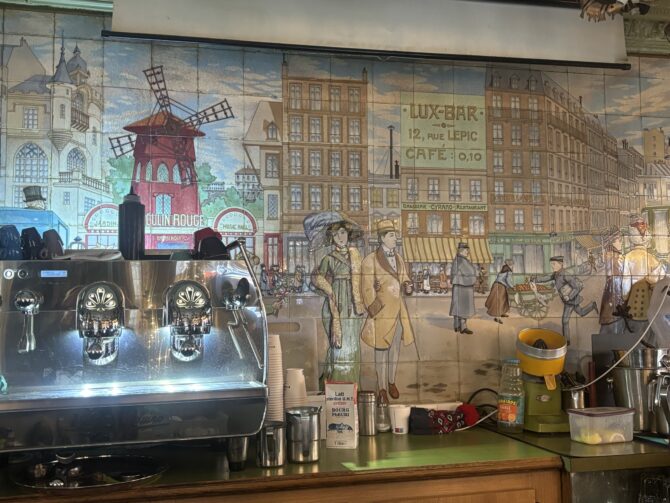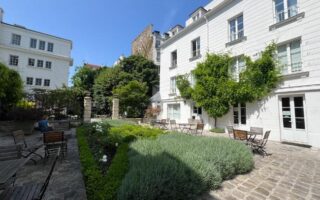Coffee in Montmartre: A Parisienne’s Café Adventures
In this column, native Parisian Edith de Belleville — author, attorney, and tour guide — shares café tales and discoveries.
If you like challenges in life, then come to Montmartre; you won’t be disappointed. Because having a coffee in Montmartre can be a real challenge. Not that Montmartre lacks cafés, far from it. With its 12 million tourists each year, one could even say that there is no shortage of cafés in Montmartre.
But finding an authentic café with real Montmartreans requires a little patience and perseverance. Mind you, I understand the millions of visitors. Wandering the picturesque cobblestone streets of Montmartre in the footsteps of Picasso and Modigliani is a charming experience. Every time I lead a guided tour in this bucolic place I always hear the voices of Pablo and Amedeo who passionately tell me about their bohemian life.
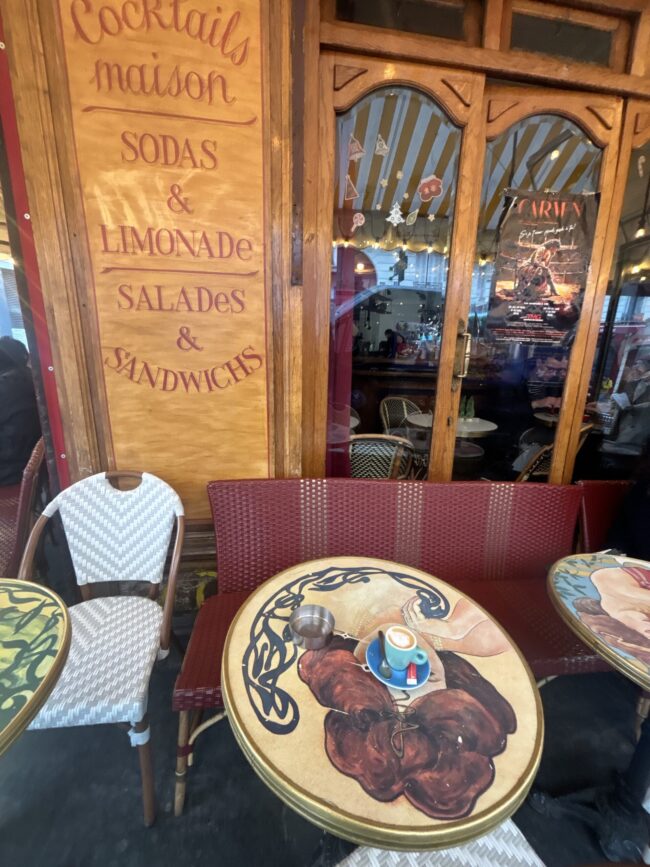
The charming vintage cafe terrace of Lux Bar. Photo: Edith de Belleville
By going up and down Rue Lepic towards the famous Moulin Rouge, I finally found my authentic café, because I have a good eye. It’s the tiny Lux Bar. I first spotted the beautiful young women from 1900 drawn on the bistro tables, inviting you to sit down. Admiring the vintage lemon-yellow storefront of Lux Bar, I guessed that this establishment had been in Montmartre since at least 1920. No fuss here. Even the smell of beef bourguignon on the stove smells homemade.
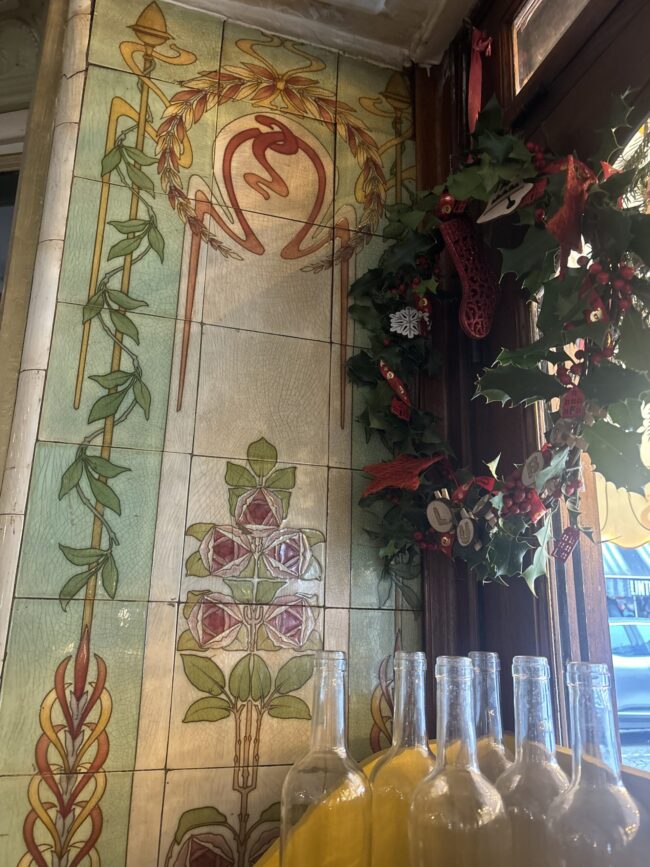
Detail of the mosaic wall inside Lux Bar. Photo: Edith de Belleville
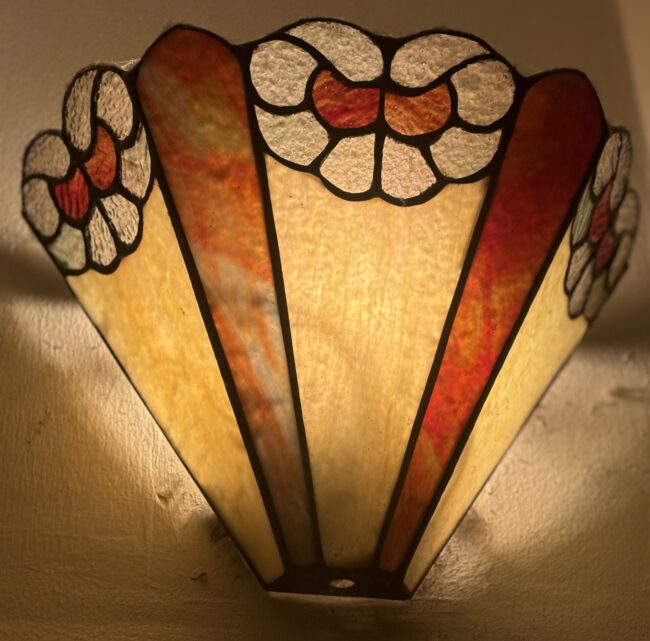
The vintage lamp in the bathroom of the Lux Bar. Photo: Edith de Belleville
I sat down on the terrace and watched the tourists going up and down Rue Lepic. The world was at my feet. While enjoying my coffee I heard Spanish, Portuguese, English, Swedish, Dutch, Russian, German, a Slavic language and another Asian, and even French (my neighbor at the table who was complaining very loudly about her boyfriend on the phone).
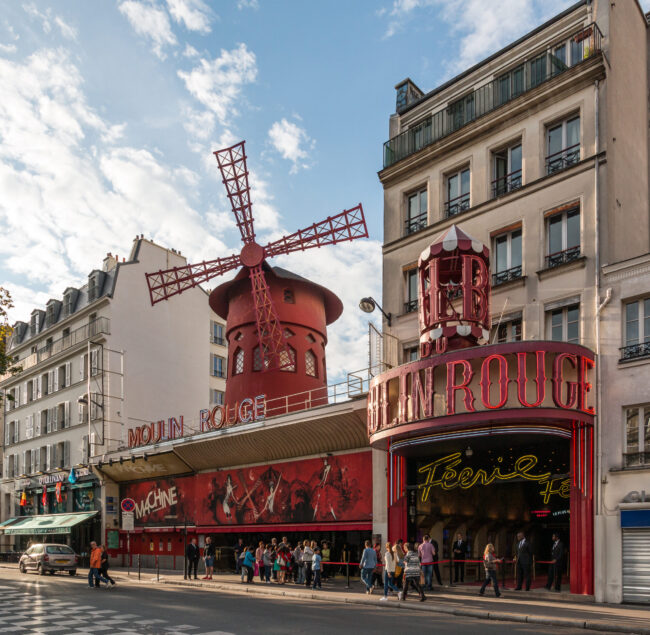
Moulin Rouge. Photo: Dietmar Rabich/ Wikimedia commons
Samy, my adorable waiter, served as my guide. He explained to me that the fresco inside the café was over a century old. That the couple who had served as a model were the famous poet Eluard and Gala (the one who would become Dalí’s muse). Then with a mysterious air, Samy went behind the bar counter to show me in a corner of the mosaic fresco a little bearded man with a top hat.
“It’s Landru, the famous serial killer of the Belle Époque,” he told me with a wry smile.
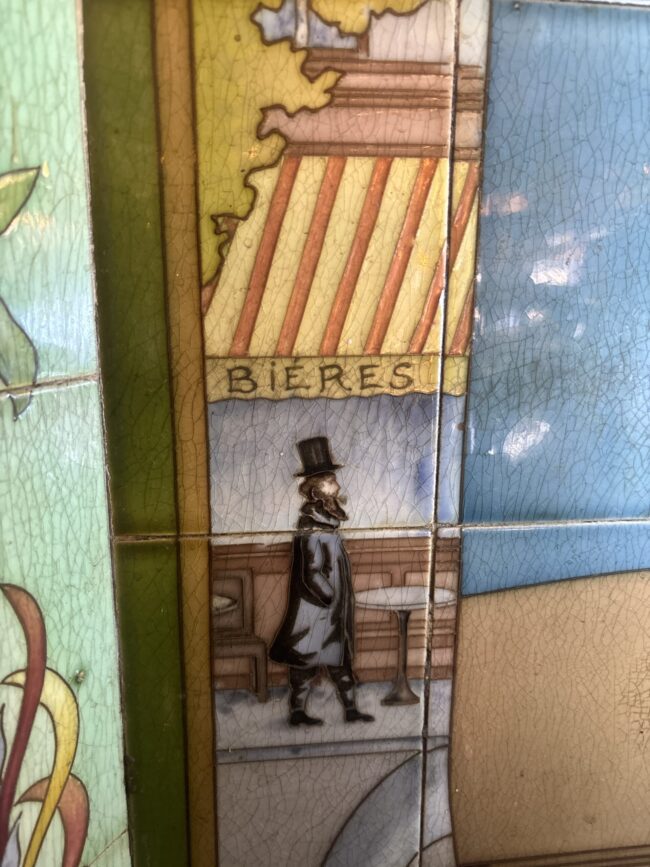
Mosaic at Lux Bar. Photo: Edith de Belleville

Mugshot of Henri Désiré Landru. 1909. Préfecture de Police. Public domain.
I shivered. “What good people,” I said, addressing with a smile the lady who was drinking her coffee right next to me at the counter. She then responded by reciting an excerpt from the famous poem by Paul Éluard that all little French schoolchildren study at school:
Sur mes cahiers d’écolier
Sur mon pupitre et les arbres
Sur le sable sur la neige
J’écris ton nom
“On my school notebooks
On my desk and the trees
On the snowy sand
I write your name.”
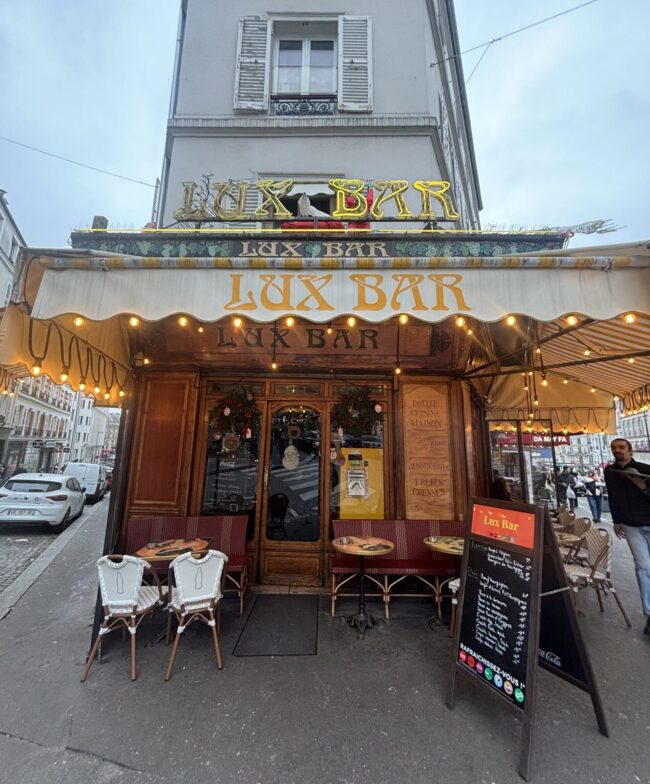
Lux Bar on rue Lepic. Photo: Edith de Belleville
It is only at the end of the poem that we understand that the word that the poet refers to at the end of each stanza in the repeated phrase “J’écris ton nom” (“I write your name”) is … liberté (freedom). This poem, titled Liberté, was written by Eluard in 1942 in the middle of the Second World War. It was even published clandestinely by the Resistance during the war and was dropped in leaflets by Allied planes on the occupied territories, thus becoming a symbol of the fight against collaboration with the Nazis.
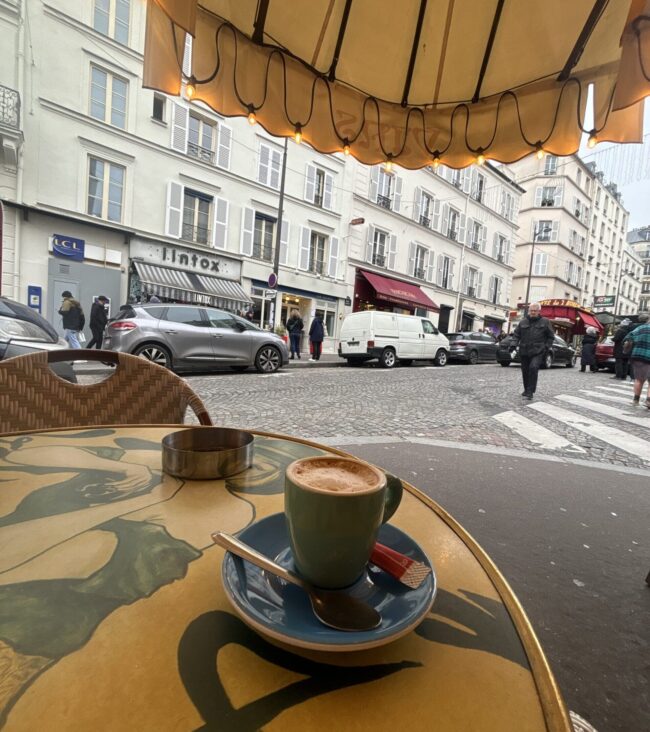
Watching the passersby in Montmartre from the terrace of Lux Bar. Photo: Edith de Belleville
Then in the café everyone started chatting with everyone. My neighbor, me, Samy and also the brother of the cook, Alexandre, the handsome manager who looks like the French actor Guillaume Canet (the ex-husband of Marion Cotillard, the actress who played Edith Piaf and won an Academy award for best actress).
The discussion was so lively that I forgot that I had a second visit to Versailles and that I had a train to take. I said goodbye quickly and ran down Rue Lepic towards my metro.
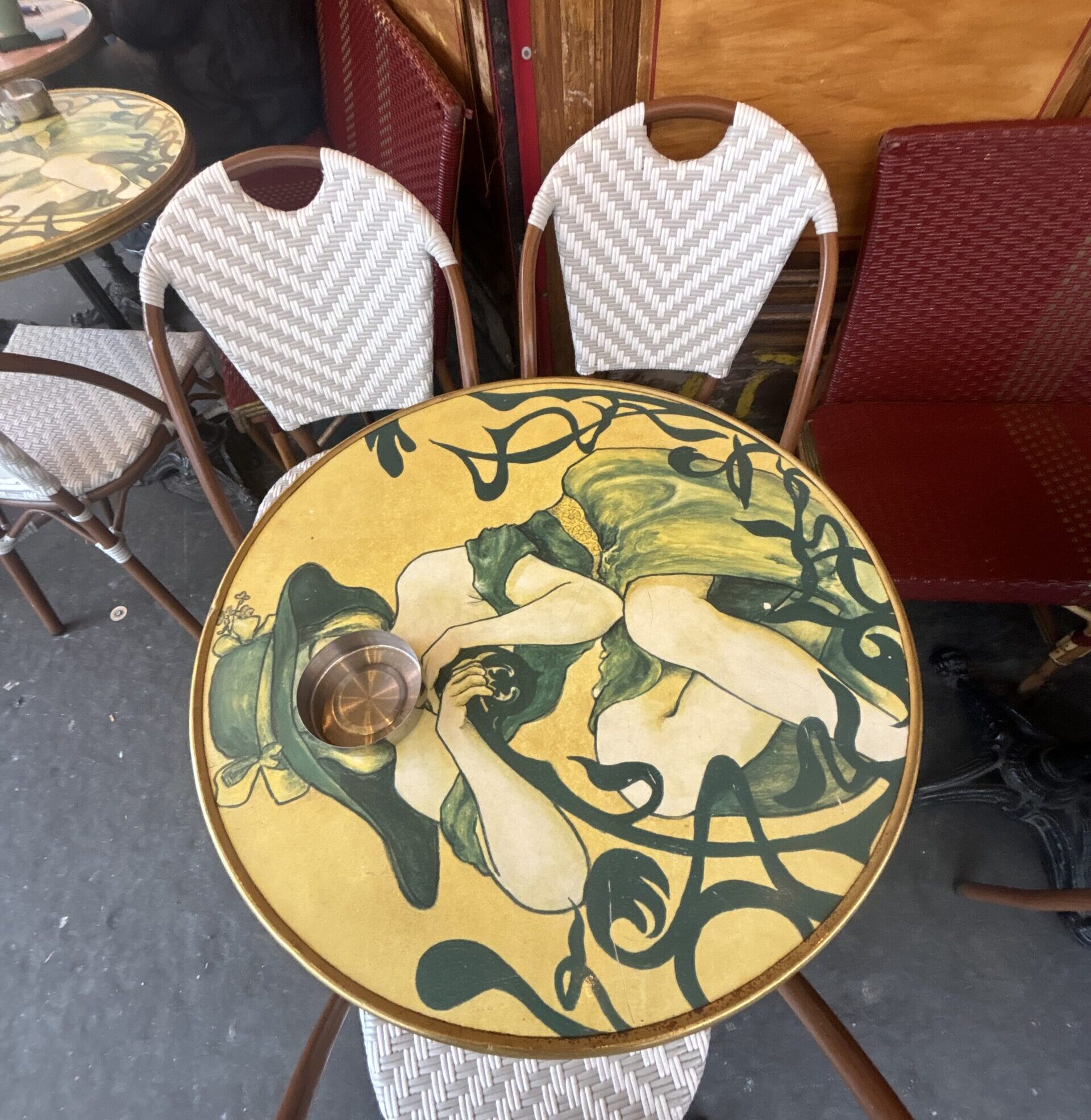
Vintage style table at Lux Bar. Photo: Edith de Belleville
As I was about to get into the metro, I suddenly realized something. This had never happened to me before. I had forgotten to pay! So I ran back up Rue Lepic like Amélie (the one from the movie) and I rushed into the café, confused, to pay for my coffee.
Seeing my embarrassment, the adorable Samy said to me with a big smile, “It’s not a big deal Madam, you could have paid next time. It would have given you a good excuse to come back and see us.” Lux Bar is like the one in the movie Amélie; everyone is nice, and even dogs are welcomed.
DETAILS
Lux Bar
12 rue Lepic, 18th
Lead photo credit : Lux Bar in Montmartre. Photo: Edith de Belleville
More in Montmartre, Paris cafes
